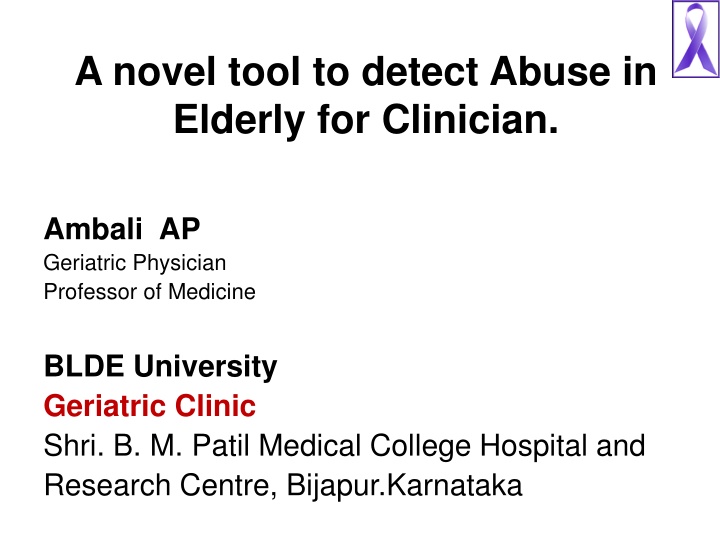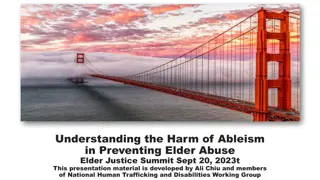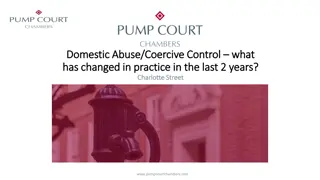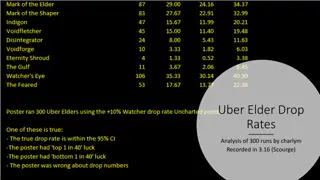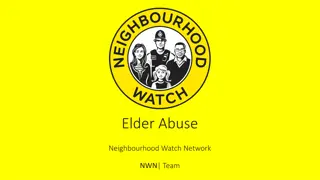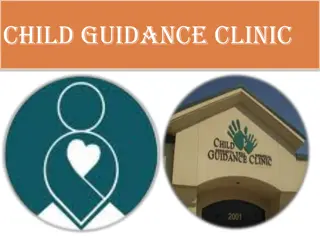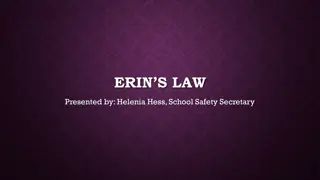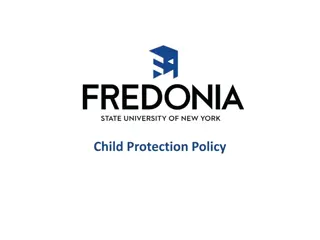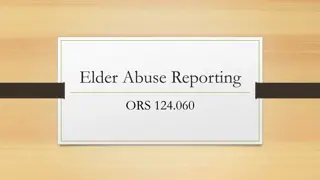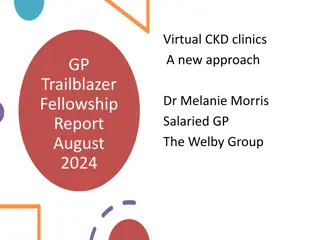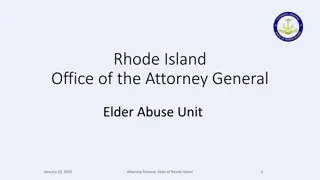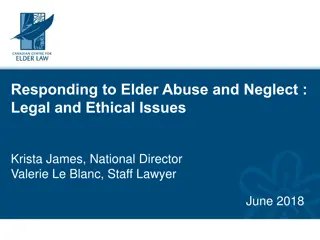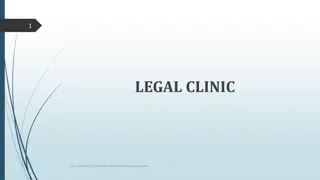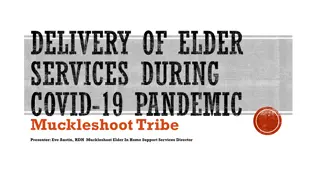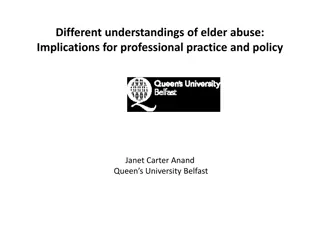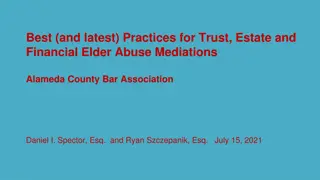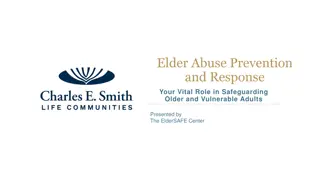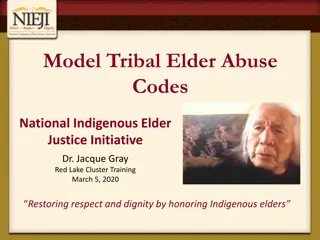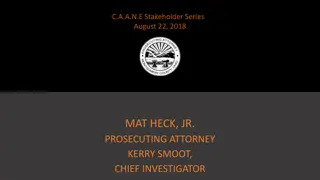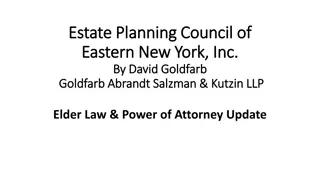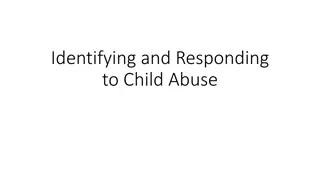Recognizing and Addressing Elder Abuse in Clinics: A Novel Tool for Clinicians
Abuse of the elderly is often overlooked in Indian society, leading to significant health impacts. Clinicians lack training in identifying abuse, hindering proper care. This article discusses the types of abuse, its impact on health, and provides a tool to help clinicians detect signs of abuse in elderly patients based on behaviors and physical indicators.
Download Presentation

Please find below an Image/Link to download the presentation.
The content on the website is provided AS IS for your information and personal use only. It may not be sold, licensed, or shared on other websites without obtaining consent from the author.If you encounter any issues during the download, it is possible that the publisher has removed the file from their server.
You are allowed to download the files provided on this website for personal or commercial use, subject to the condition that they are used lawfully. All files are the property of their respective owners.
The content on the website is provided AS IS for your information and personal use only. It may not be sold, licensed, or shared on other websites without obtaining consent from the author.
E N D
Presentation Transcript
A novel tool to detect Abuse in Elderly for Clinician. Ambali AP Geriatric Physician Professor of Medicine BLDE University Geriatric Clinic Shri. B. M. Patil Medical College Hospital and Research Centre, Bijapur.Karnataka
Introduction Though Abuse is well recognized entity in western society, we in India haven t given it a recognition so that it can be questioned in a society. The Abuse has a significant impact on health of Elderly. The Elderly don t reveal about abuse to clinician nor the clinicians are trained or taught about identifying abuse.
Introduction Most of elderly are also not aware about Abuse. Also there are no guidelines for detecting abuse in elderly for clinicians. These factors hinders identification of Abuse and the ill effects of it on their health which surfaces now and then like co morbid and remains a challenge for treating clinician A simple example is, whether being abused leads to depression or Depression pre disposes to Abuse ?
Definition A single or repeated act or lack of appropriate action, occurring within any relationship where there is an expectation of trust, which causes harm or distress to an older person. Types Physical abuse Psychological abuse Financial abuse Sexual abuse Neglect
Impact of Abuse on Health 1.The elderly avoid to discuss about Abuse with friends and Clinicians. 2.This acts as a hidden Co Morbid condition in them and leads to complications in existing diseases. 3.It also has a greater impact on out come of the treatment. 4.Most of times abuser is also with the patient, which leads to poor communication among a doctor, patient and caregiver. Due to which there will be delay in recovery, decreased Quality of Life and increased cost of treatment in Elderly.
Tool to Identify Abuse in Elderly by Clinician 1 The elderly seek privacy in clinic. 2 They visit frequently to hospital with non specific symptoms 3 Elderly person cries in clinic 4 Once admitted, they try to avoid getting early discharge. They keep reporting new symptoms every day to ensure to stay in hospital. 5 Signs of Under nutrition and poor hygiene present 6 The parameters like blood sugar levels, Blood pressure levels not reaching base line despite many drugs
7 They expect prescription written for at least one month, knowing that the son will bring drugs for one week or fifteen days only. 8 Joint Pains/Headache or Post Operative Pain don t reduce despite medications with maximum dose. 9 Using spectacles with broken glass/ Un Repaired hearing aid/ broken walking stick A son approaching a clinician for a certificate stating that his father is old and cannot sign. 1 0 Ideas of Suicide / seeking medication to end life in elderly 1 1
12 Injuries at unusual sites following fall/ Un explained Bruises over upper limb/ Non Healing wounds/injuries in genitalia/rope marks on wrists 13 Elderly patient repeatedly requests for early discharge, request to change the nursing staff, or the son says that he suspects most of the drugs brought are not used for the patient. 14 Delay in seeking treatment and difference in history of presentation between patient and caregiver. 15 Alcohol / Drug / Tobacco dependence.
Following precaution must be taken by clinician 1.Take the family members /Abusers in Confidence. 2.Don t reveal to care givers what the elderly has reported 3.Always countercheck with the version reported by elderly from son/daughter in law before labeling the elderly is subject to abuse. 4.Most of Elderly are not aware of what Abuse is. 5.Most of the points mentioned in the tool are to be observed by clinician and only few points are asked to elderly for clarification.
Conclusion Abuse in elderly is also silent in two aspects. One, the elderly silently accepts abuse, and second the abuse in elderly has silent negative impact on health and surfaces when admitted for emergencies. Some elderly take extreme steps to end life so as to get rid of Abuse. As there are hurdles in identifying abuse by clinician, it can be taken as a co morbid and not diagnosis
References 1.lachs MS,Pillemer KA. Elder Abuse.Lancet 2004;304:1236-1272. 2.Missing voices:Views of Older Person on Elder Abuse.A survey of eight countries. World Health Organization Monograph.2004. 3.Elder Mistreatment.By Lachs MS. In Hazzards Text Book of Geriatric Medicine.Chapter 60. 5thEdn. Pg 731 -736. 4.Elder Abuse. by Tinker A, McCreadie C. In Brocklehurst s Textbook of Geriatric Medicine and Gerontology. Chapter102. 5thEdn.Pg1431-1437. Helpful Websites www.inpea.net www.who.int/ageing
Thank You Comments / suggestions anandambali@yahoo.com
